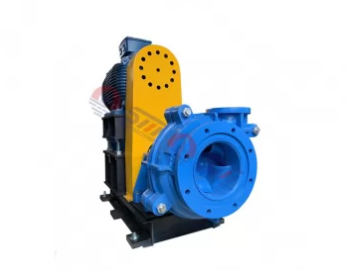Understanding Froth Pump: A Comprehensive Guide
Froth pumps play a vital role in industries where transporting frothy slurries is essential, such as mining, mineral processing, and chemical production. Designed to handle materials with a high level of entrained air, froth pumps ensure operational efficiency and prevent air blockages that could otherwise disrupt production. This comprehensive guide explains what froth pumps are, how they work, their benefits, and key considerations for selecting the right pump for your application.
What Is a Froth Pump?
A froth pump is a specialized slurry pump engineered to transport liquids with significant air or foam content. Unlike conventional pumps, froth pumps feature a unique impeller and casing design to handle materials with lower density and increased viscosity due to air entrainment. These pumps are indispensable in industries where the separation and recovery of valuable minerals rely on processes like flotation.
The distinguishing feature of froth pumps is their ability to manage the challenging properties of frothy slurries without losing efficiency or experiencing blockages.
How Does a Froth Pump Work?
The primary function of a froth pump is to pump air-laden slurries effectively. Its design often incorporates:
Open Impellers: These prevent air lock by allowing the froth to pass through smoothly.
Oversized Hoppers: These help the pump handle large volumes of froth.
Expeller Designs: These minimize the backflow of air, ensuring efficient pumping.
By addressing issues like air entrainment and density variation, froth pumps maintain a steady flow, ensuring that operations proceed without interruptions.
Key Applications of Froth Pumps
Froth pumps are indispensable in several industries:
Mining and Mineral Processing: Used for transferring flotation froth in processes designed to recover precious metals and minerals.
Chemical Plants: Transport chemical slurries containing foam or air.
Paper and Pulp Mills: Handle frothy mixtures during paper production.
Oil Sands Processing: Manage slurries with entrained air from bitumen extraction.
Benefits of Using Froth Pumps
Efficiency in Handling Air-Laden Slurries: Froth pumps minimize downtime caused by air blockages.
Durability: Built to withstand abrasive and corrosive slurries, ensuring long service life.
Versatility: Effective across various industries and slurry types.
Reduced Energy Consumption: Optimized designs ensure minimal energy loss during pumping.
Choosing the Right Froth Pump
Selecting the right froth pump is critical to achieving optimal performance. Here are key considerations:
Material Compatibility: Ensure the pump material resists corrosion and abrasion based on the slurry properties.
Capacity and Head: Match the pump’s specifications to the volume and distance you need to transport.
Ease of Maintenance: Opt for pumps with user-friendly designs to minimize downtime during maintenance.
Reputation of Manufacturer: Choose a trusted supplier with expertise in froth pump solutions.
Maintenance Tips for Froth Pumps
To maximize the lifespan and efficiency of your froth pump:
Regularly inspect and clean the pump components.
Monitor wear and replace worn parts promptly.
Ensure proper installation to prevent operational inefficiencies.
Conclusion
Froth pumps are a game-changer in industries requiring the transportation of frothy slurries. With their unique design and robust performance, these pumps ensure operational continuity and efficiency in even the most challenging applications.
If you're looking for reliable froth pump solutions tailored to your needs, contact us today! Our team of experts is ready to help you choose the ideal pump for your industry.


